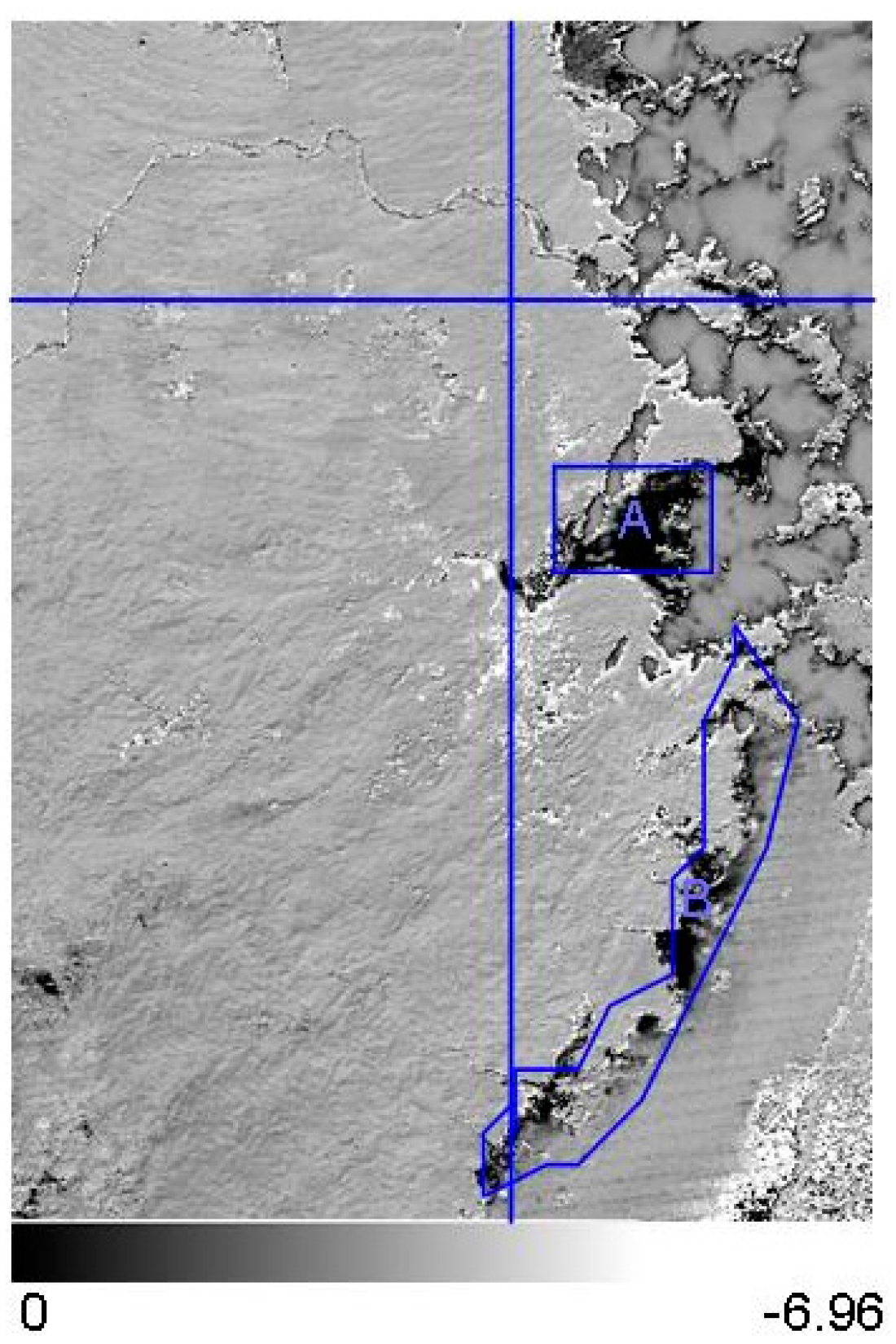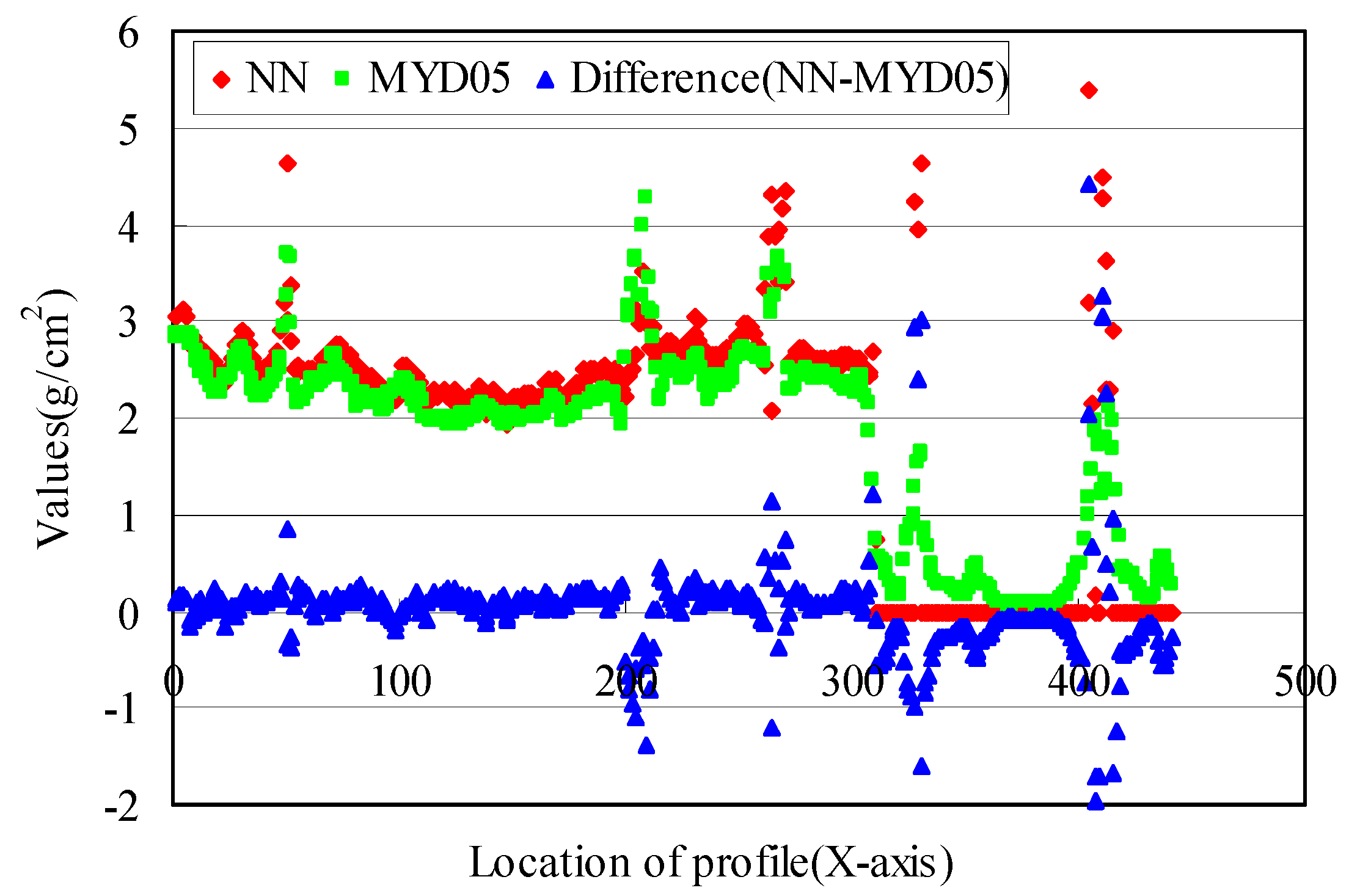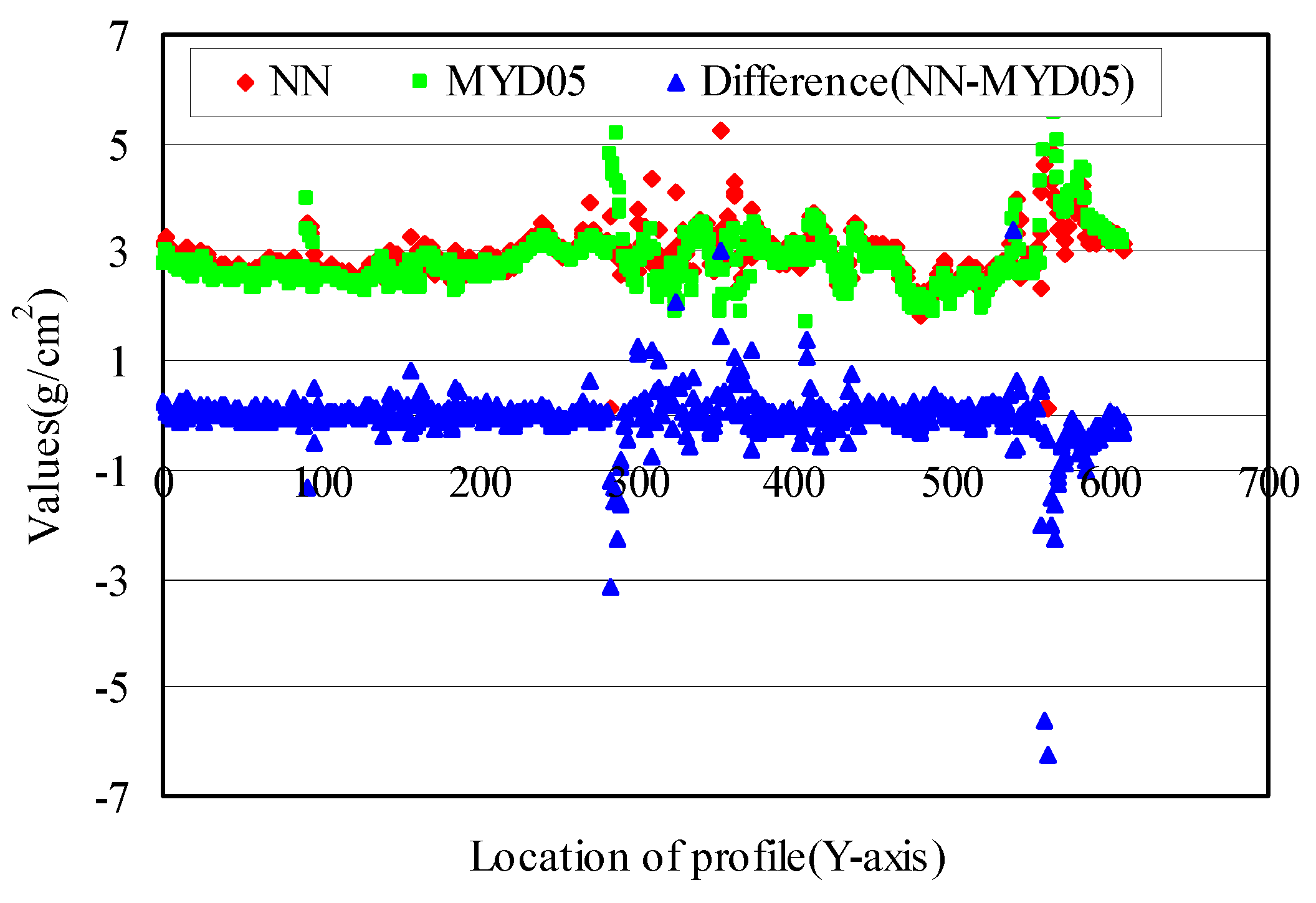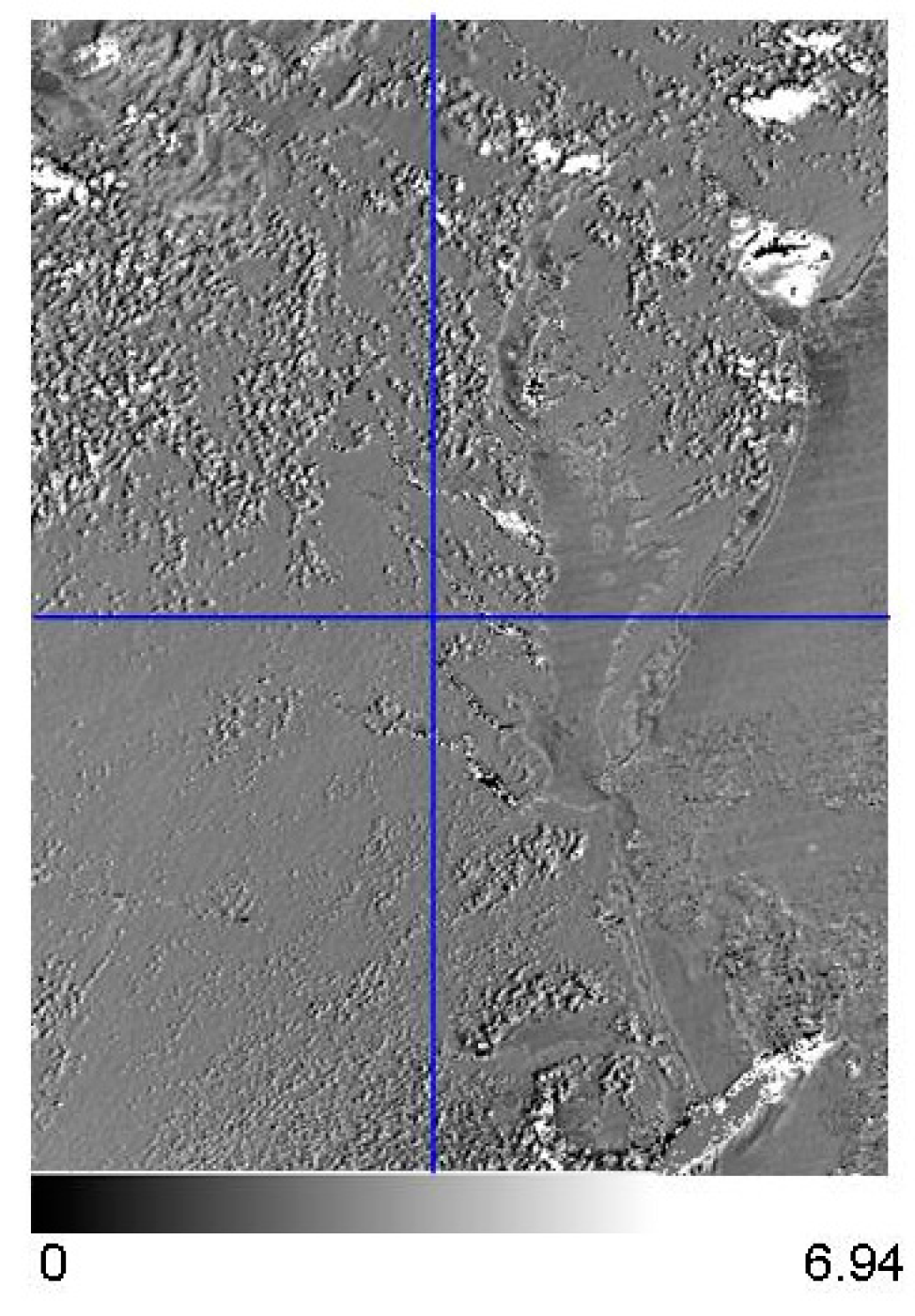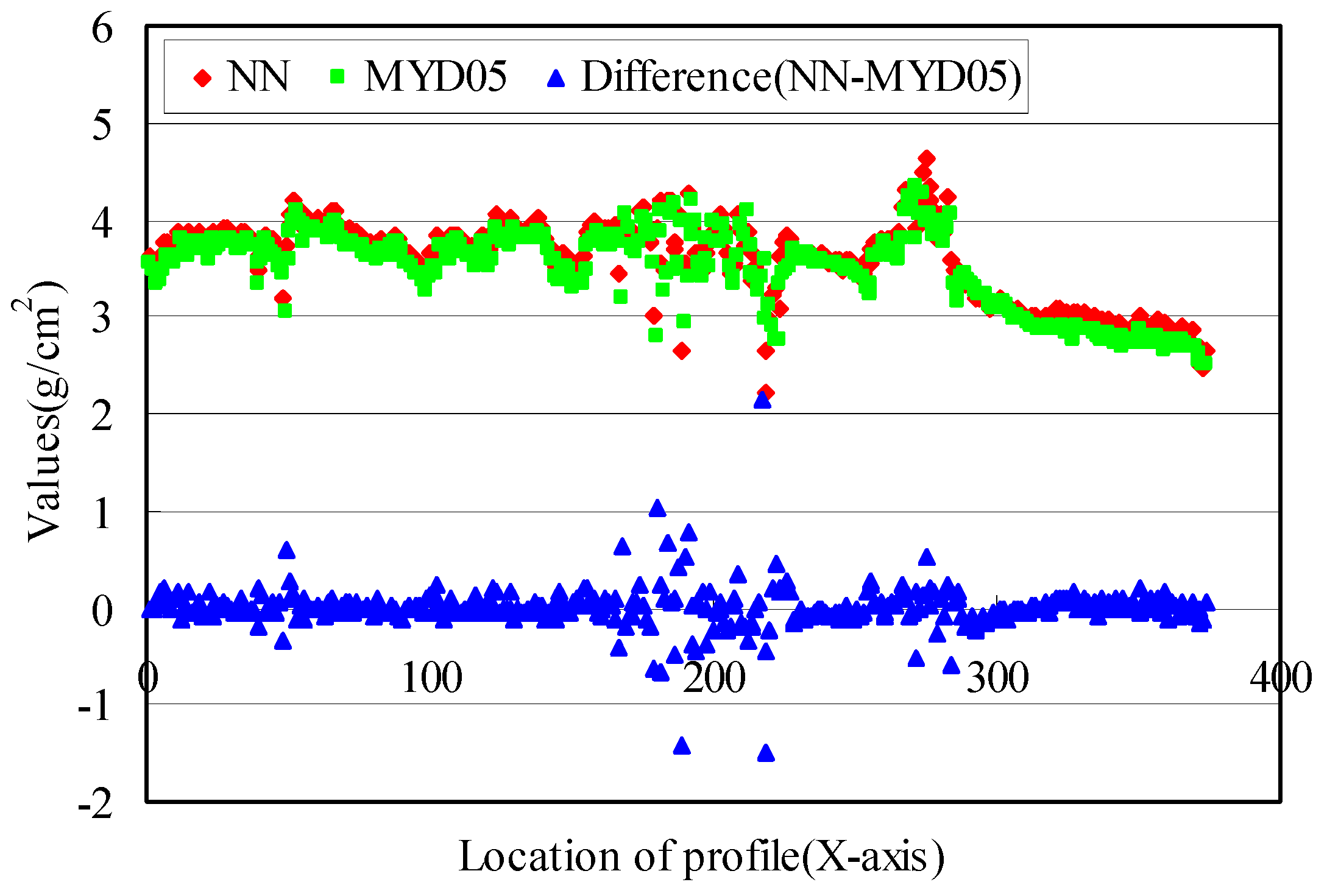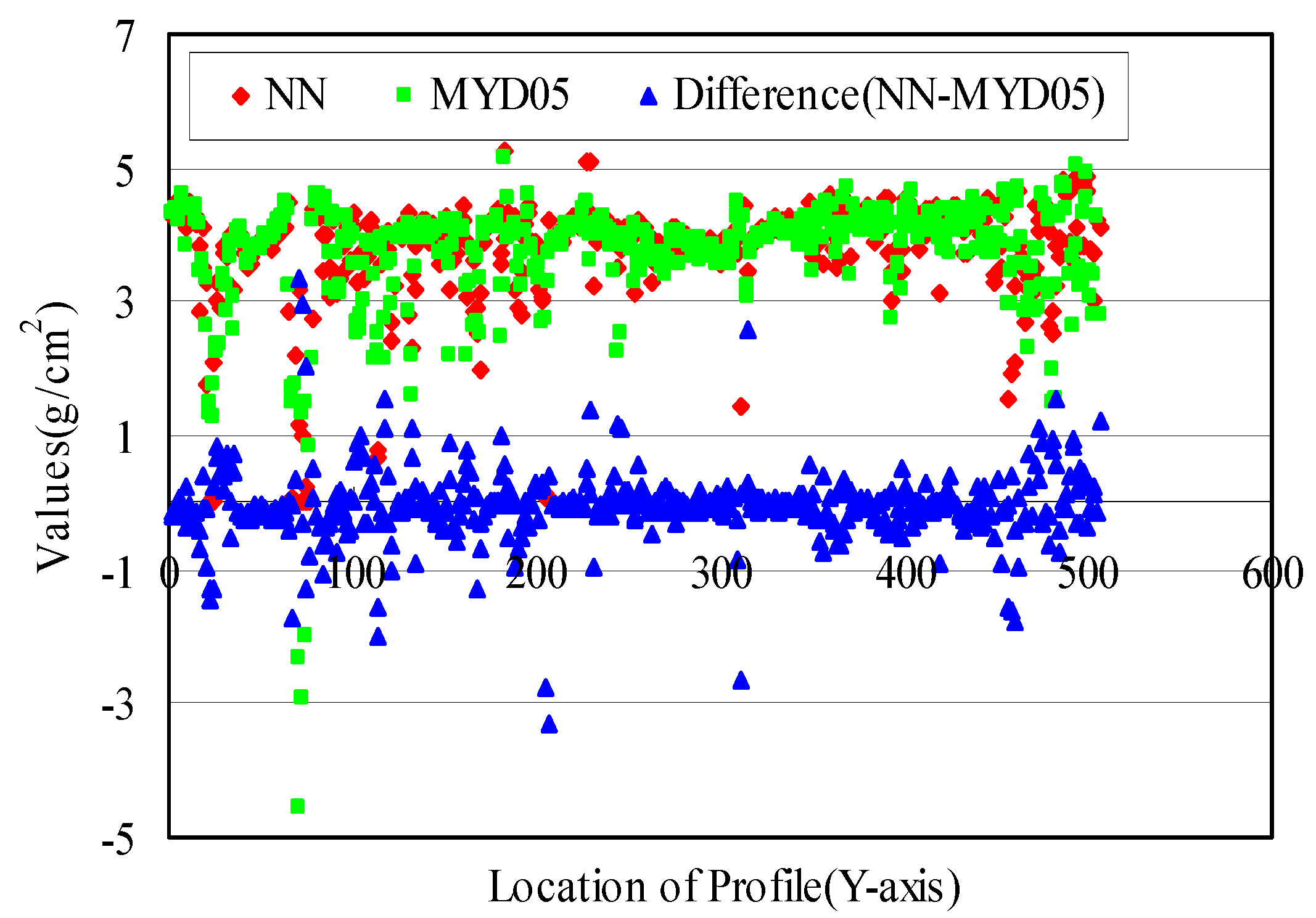An Advanced Radiative Transfer and Neural Network Scheme and Evaluation for Estimating Water Vapor Content from MODIS Data
Abstract
:1. Introduction
2. An Advanced Scheme
- (1)
- The land surface reflectance of water, snow, soil, and vegetation (about 49 land types) [11] in MODIS bands 2, 5, 17, 18 and 19 are used as input parameters for MODTRAN4. The range of atmospheric water vapor content is from 0.3 g cm−2 to 3.5 g cm−2 for the purposes of simulation.
- (2)
- Computing the radiance () in bands 2, 5, 17, 18, 19, and computing the ratios , , , , , , which are made up of six input nodes of neural network, with the output node being water vapor content. The training and testing databases were built.
- (3)
- Training and testing the neural network.
- (4)
- Estimation of water vapor content from the MODIS image data is performed using the neural network.
3. Results and Evaluation
4. Conclusions
Acknowledgments
Author Contributions
Conflicts of Interest
References
- Mao, K.; Li, H.T.; Hu, D.Y.; Wang, J.; Huang, J.X.; Li, Z.L.; Zhou, Q.B.; Tang, H.J. Estimation of water vapor content in near-infrared bands around 1 μm from MODIS data by using RM–NN. Opt. Express 2010, 18, 9542–9554. [Google Scholar] [CrossRef] [PubMed]
- Kaufman, Y.J.; Gao, B.C. Remote sensing of water vapor in the near-IR from EOS/MODIS. IEEE Trans. Geosci. Remote Sens. 1992, 5, 871–884. [Google Scholar] [CrossRef]
- Gao, B.C.; Kaufman, Y.J. The MODIS Near-IR Water Vapor Algorithm, Product ID: MOD05-Total Precipitable Water; Algorithm technical background document (ATBD); Remote Sensing Division, Naval Research laboratory: Washington, DC, USA; Climate and Radiation Branch, NASA Goddard Space Flight Center: Greenbelt, MD, USA, 1998; pp. 1–25.
- Gao, B.C.; Kaufman, Y.J. Water vapor retrievals using Moderate Resolution Imaging Spectrometer (MODIS) near-IR channels. J. Geophys. Res. Atmos. 2003, 108. [Google Scholar] [CrossRef]
- Sobrino, J.A.; Kharraz, J.E.; Li, Z.L. Surface temperature and water vapour retrieval from MODIS data. Int. J. Remote Sens. 2003, 24, 5161–5182. [Google Scholar] [CrossRef]
- King, M.D.; Kaufman, Y.J.; Menzel, W.P.; Tanre, D. Remote sensing of cloud, aerosol, and water vapor properties from the Moderate Resolution Imaging Spectrometer (MODIS). IEEE Trans. Geosci. Remote Sens. 1992, 30, 1–27. [Google Scholar] [CrossRef]
- Berk, A.; Bemstein, L.S.; Roberttson, D.C. MODTRAN: A Modetate Resolution Model for LOWTRAN; Rep. AFGL-TR-87-0220; Spectral Science, Inc.: Burlington, MA, USA, 1987. [Google Scholar]
- Mao, K.B.; Shi, J.; Li, Z.; Tang, H. An RM-NN algorithm for retrieving land surface temperature and emissivity from EOS/MODIS data. J. Geophys. Res. Atmos. 2007, 112. [Google Scholar] [CrossRef]
- Mao, K.B.; Shi, J.C.; Tang, H.J.; Li, Z.L.; Wang, X.F.; Chen, K.S. A neural network technique for separating land surface emissivity and temperature from ASTER imagery. IEEE Trans. Geosci. Remote Sens. 2008, 46, 200–208. [Google Scholar] [CrossRef]
- Mao, K.; Tang, H.J.; Wang, X.F.; Zhou, Q.B.; Wang, D.L. Near-surface air temperature estimation from ASTER data using neural network. Int. J. Remote Sens. 2008, 29, 6021–6028. [Google Scholar] [CrossRef]
- Bowker, D.E.; Davis, R.E.; Myrick, D.L.; Stacy, K.; Jones, W.T. Spectral Reflectances of Natural Targets for Use in Remote Sensing Studies; NASA Reference Publication 1139; Scientific and Technical Information Branch, National Aeronautics and Space Administration (NASA): Washington, DC, USA, 1985.
- Tzeng, Y.C.; Chen, K.S.; Kao, W.L.; Fung, A.K. A dynamic learning neural network for remote sensing applications. IEEE Trans. Geosci. Remote Sens. 1994, 5, 1096–1102. [Google Scholar] [CrossRef]
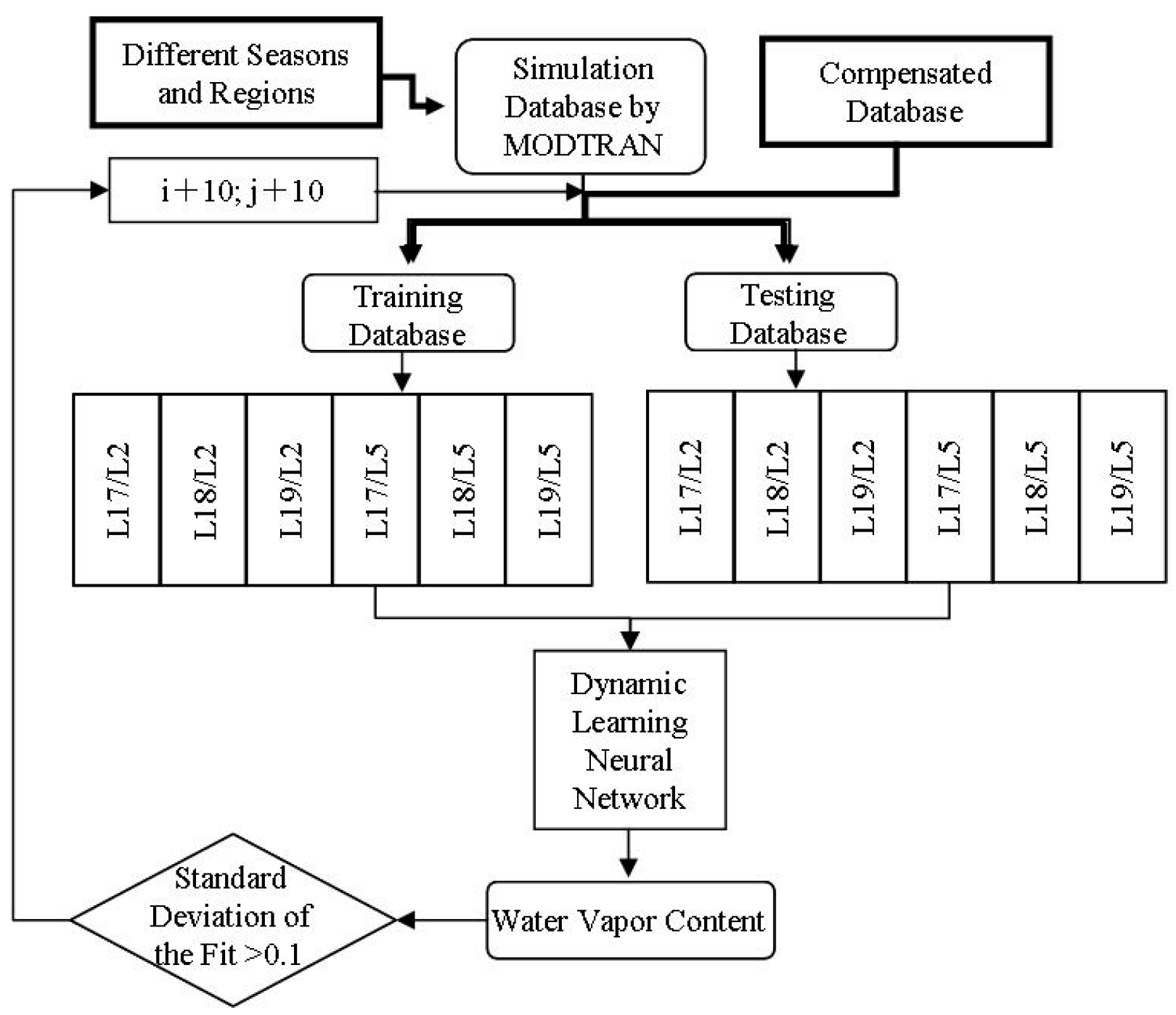
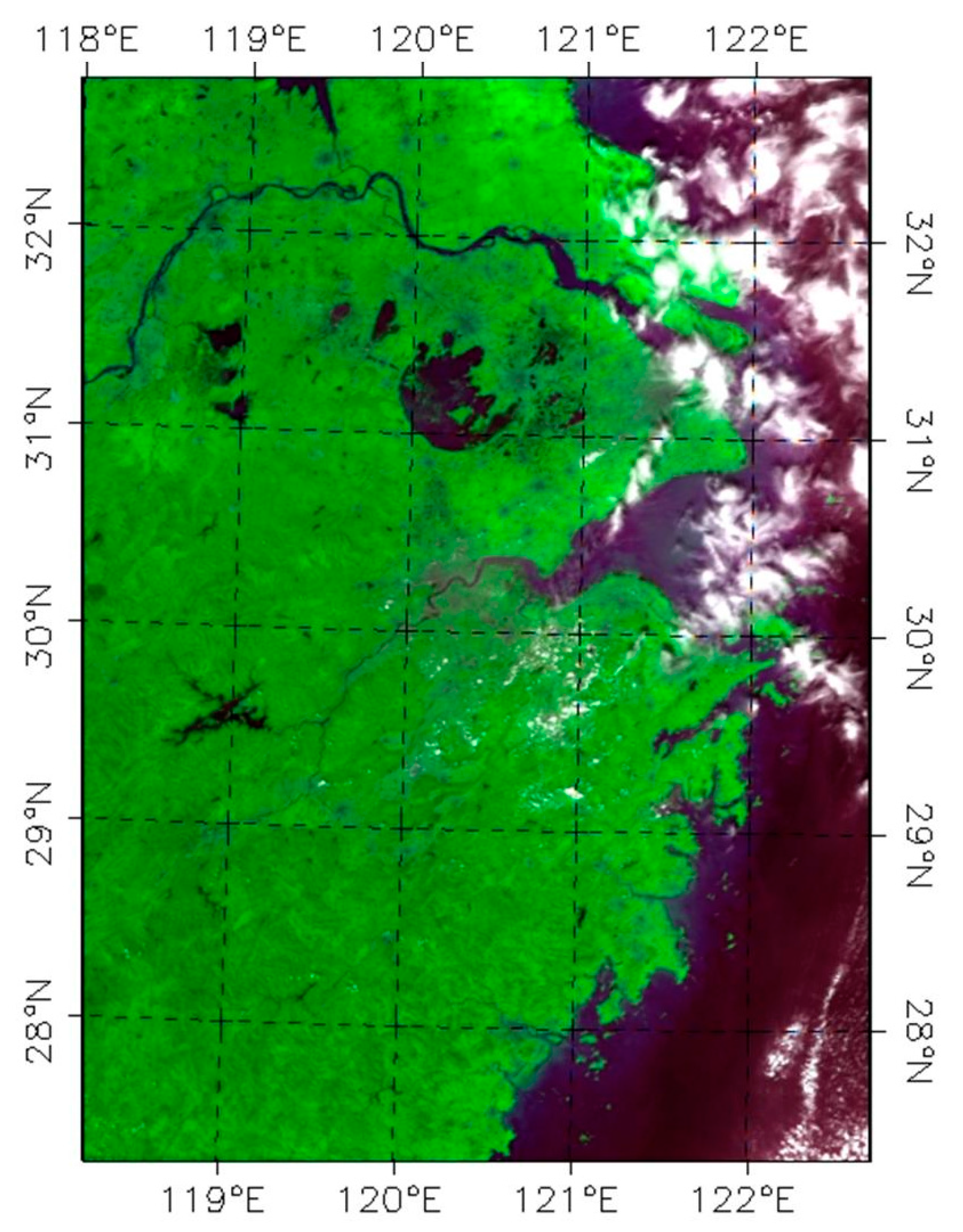
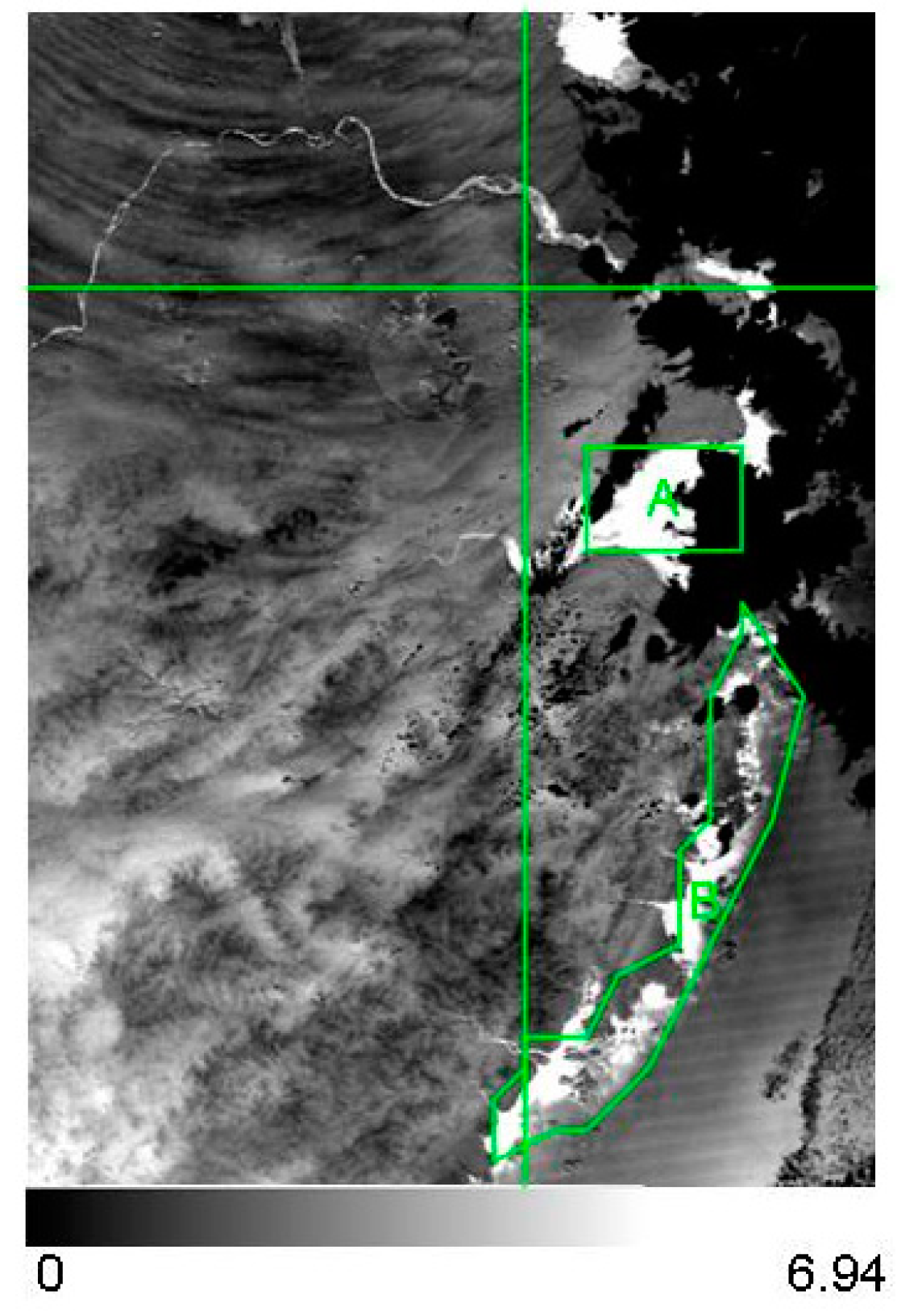
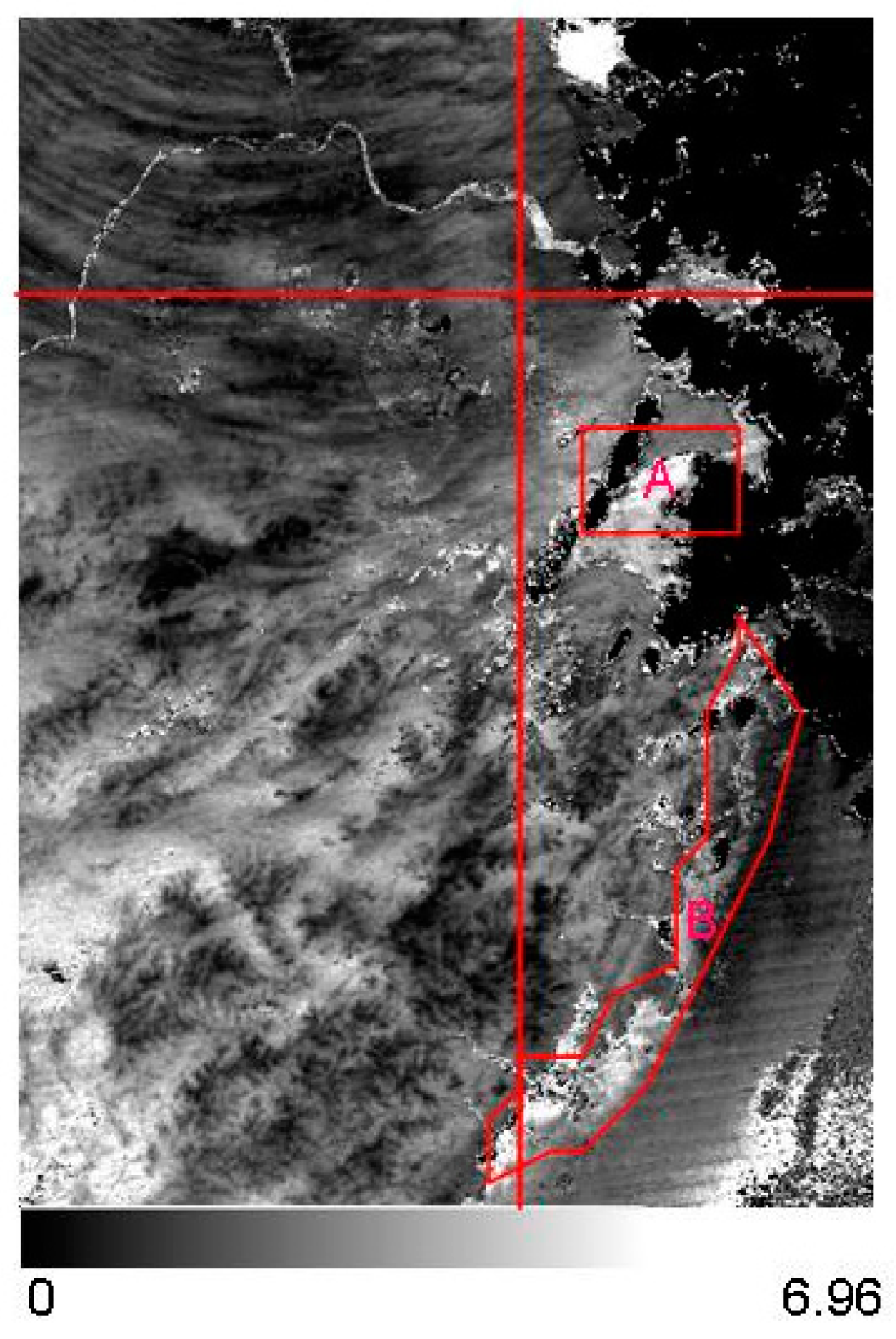
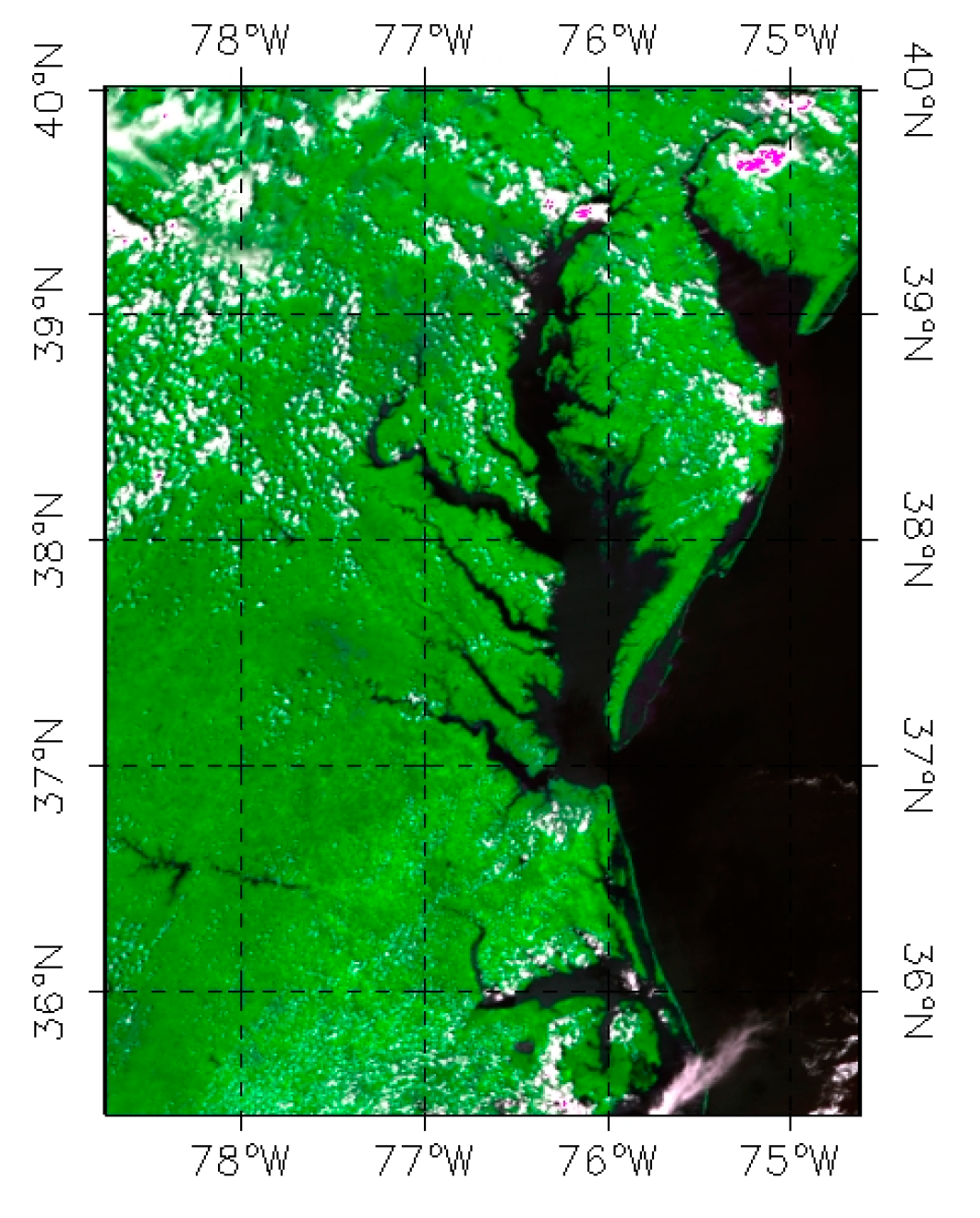
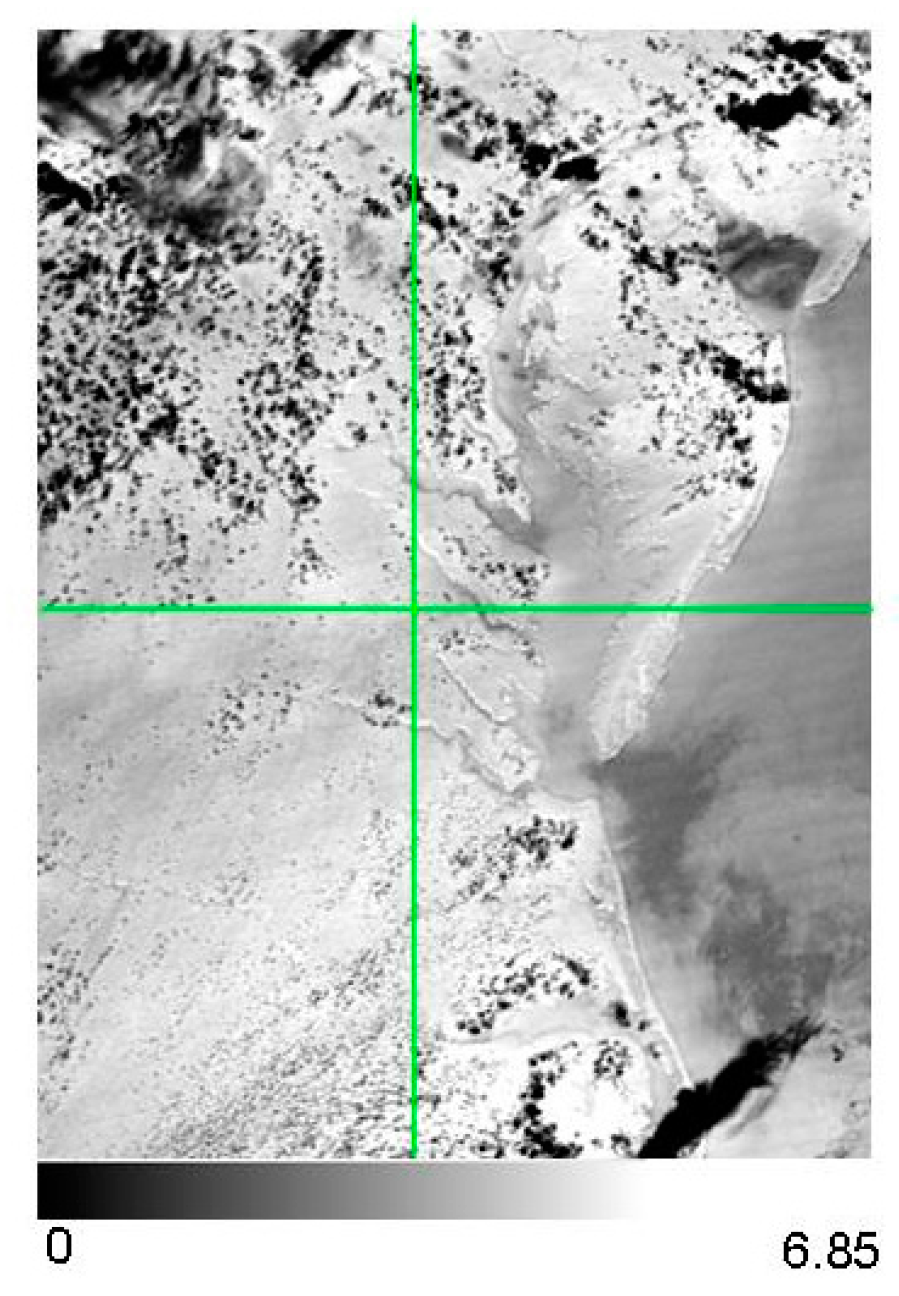
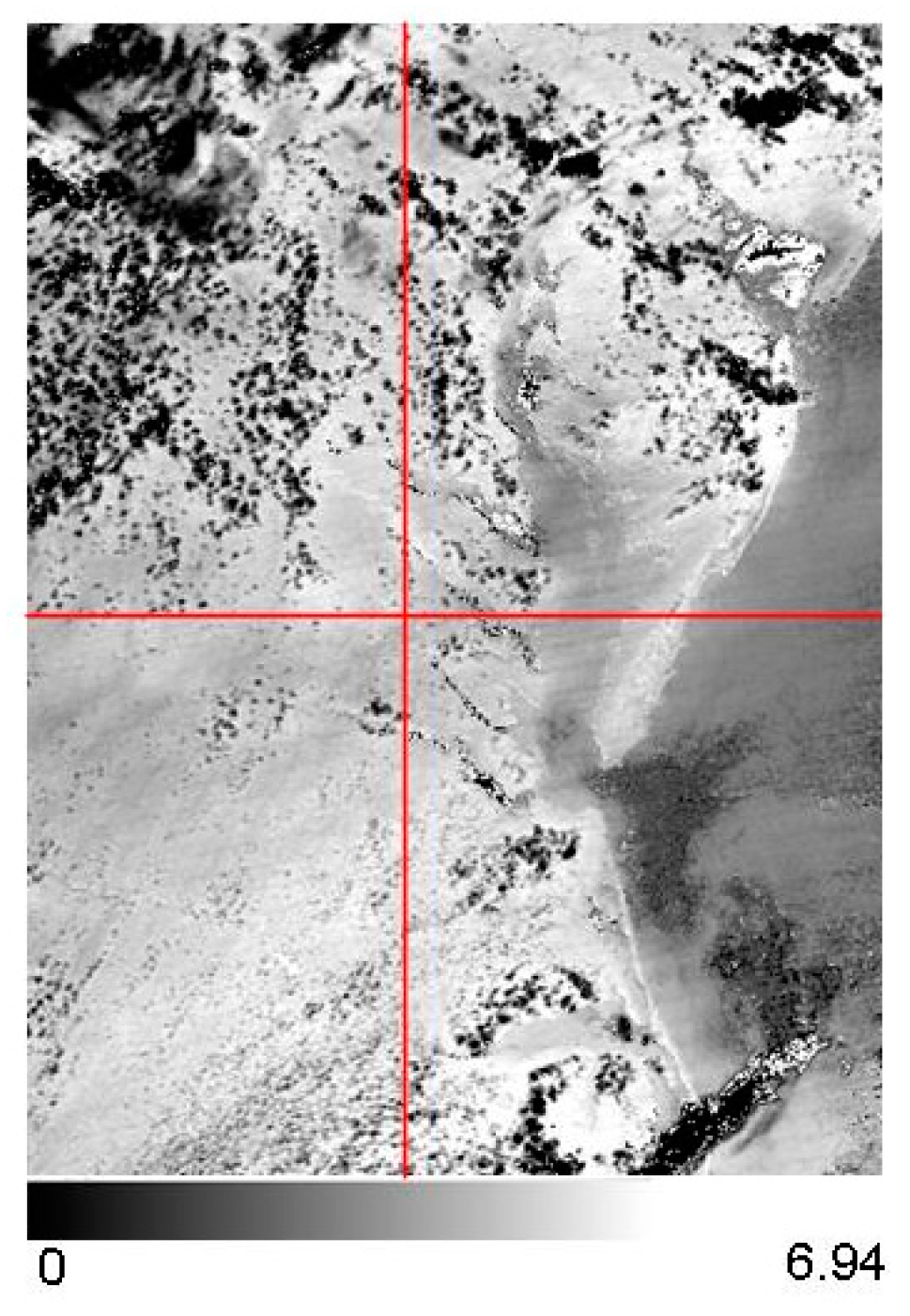

| Different Seasons and Regions | Hidden Nodes | Water Vapor Content | |||
|---|---|---|---|---|---|
| Average Error (g cm−2) | Average Error (%) | R | SD | ||
| Tropical | 400–400 | 0.049 | 4.3 | 0.996 | 0.06 |
| Mid-latitude Summer | 380–380 | 0.041 | 3.4 | 0.996 | 0.059 |
| Mid-latitude Winter | 370–370 | 0.041 | 3.4 | 0.997 | 0.059 |
| Sub-arctic Summer | 350–350 | 0.039 | 3.2 | 0.997 | 0.057 |
| Sub-arctic Winter | 350–350 | 0.038 | 3.1 | 0.998 | 0.056 |
| Above Included | 800–800 | 0.058 | 5.1 | 0.994 | 0.078 |
| Hangzhou-ZFU (30N, 119E) | Taihu (31N, 120E) | Hefei (31N, 117E) |
| Shouxian (32N, 116E) | NUIST (32N, 118E) | SACOL (35N, 104E) |
| Yulin (38N, 109E) | XiangHe (39N, 116E) | Yufa_PEK (39N, 116E) |
| PKU_PEK (39N, 116E) | Beijing (39N, 116E) | Xinglong (40N, 117E) |
| Liangning (41N, 122E) | Inner_Mongolia (42N, 115E) | Dalanzadgad (43N, 104E) |
| Hidden Nodes | Water Vapor Content | |||
|---|---|---|---|---|
| Average Error (g cm−2) | Average Error (%) | R | SD | |
| 350–350 | 0.056 | 5.2 | 0.995 | 0.075 |
| 370–370 | 0.054 | 5 | 0.995 | 0.071 |
| 420–420 | 0.048 | 4.5 | 0.996 | 0.065 |
| 430–430 | 0.044 | 4.1 | 0.997 | 0.061 |
| COVE (36N, 75W) | EOPACE1 (36N, 75W) | COVE_SEAPRISM (36N, 75W) |
| EOPACE2 (36N, 75W) | Norfolk_State_Univ (36N, 76W) | EOPACE1 (36N, 75W) |
| Hampton_Roads (36N, 76W) | Wallops (37N, 75W) | Hog_Island (37N, 75W) |
| Cheritan (37N, 75W) | NASA_LaRC (37N, 76W) | Sterling (38N, 77W) |
| GSFC (38N, 76W) | Jug_Bay (38N, 76W) | Big_Meadows (38N, 78W) |
| SERC (38N, 76W) | Easton_Airport (38N, 76W) | Hagerstown (39N, 77W) |
| UMBC (39N, 76W) | USDA-Howard (39N, 76W) | Kolfield (39N, 74W) |
| USDA (39N, 76W) | Burtonsville (39N, 76W) | Burtonsville (39N, 76W) |
| MD_Science_Center (39N, 76W) | USDA-BARC (39N, 76W) | Gaithersburg (39N, 77W) |
| Philadelphia (40N, 75W) | Penn_State_Univ (40N, 78W) | Sandy_Hook (40N, 73W) |
© 2017 by the authors. Licensee MDPI, Basel, Switzerland. This article is an open access article distributed under the terms and conditions of the Creative Commons Attribution (CC BY) license (http://creativecommons.org/licenses/by/4.0/).
Share and Cite
Mao, K.; Shen, X.; Zuo, Z.; Ma, Y.; Liu, G.; Tang, H. An Advanced Radiative Transfer and Neural Network Scheme and Evaluation for Estimating Water Vapor Content from MODIS Data. Atmosphere 2017, 8, 139. https://doi.org/10.3390/atmos8080139
Mao K, Shen X, Zuo Z, Ma Y, Liu G, Tang H. An Advanced Radiative Transfer and Neural Network Scheme and Evaluation for Estimating Water Vapor Content from MODIS Data. Atmosphere. 2017; 8(8):139. https://doi.org/10.3390/atmos8080139
Chicago/Turabian StyleMao, Kebiao, Xinyi Shen, Zhiyuan Zuo, Ying Ma, Guang Liu, and Huajun Tang. 2017. "An Advanced Radiative Transfer and Neural Network Scheme and Evaluation for Estimating Water Vapor Content from MODIS Data" Atmosphere 8, no. 8: 139. https://doi.org/10.3390/atmos8080139




